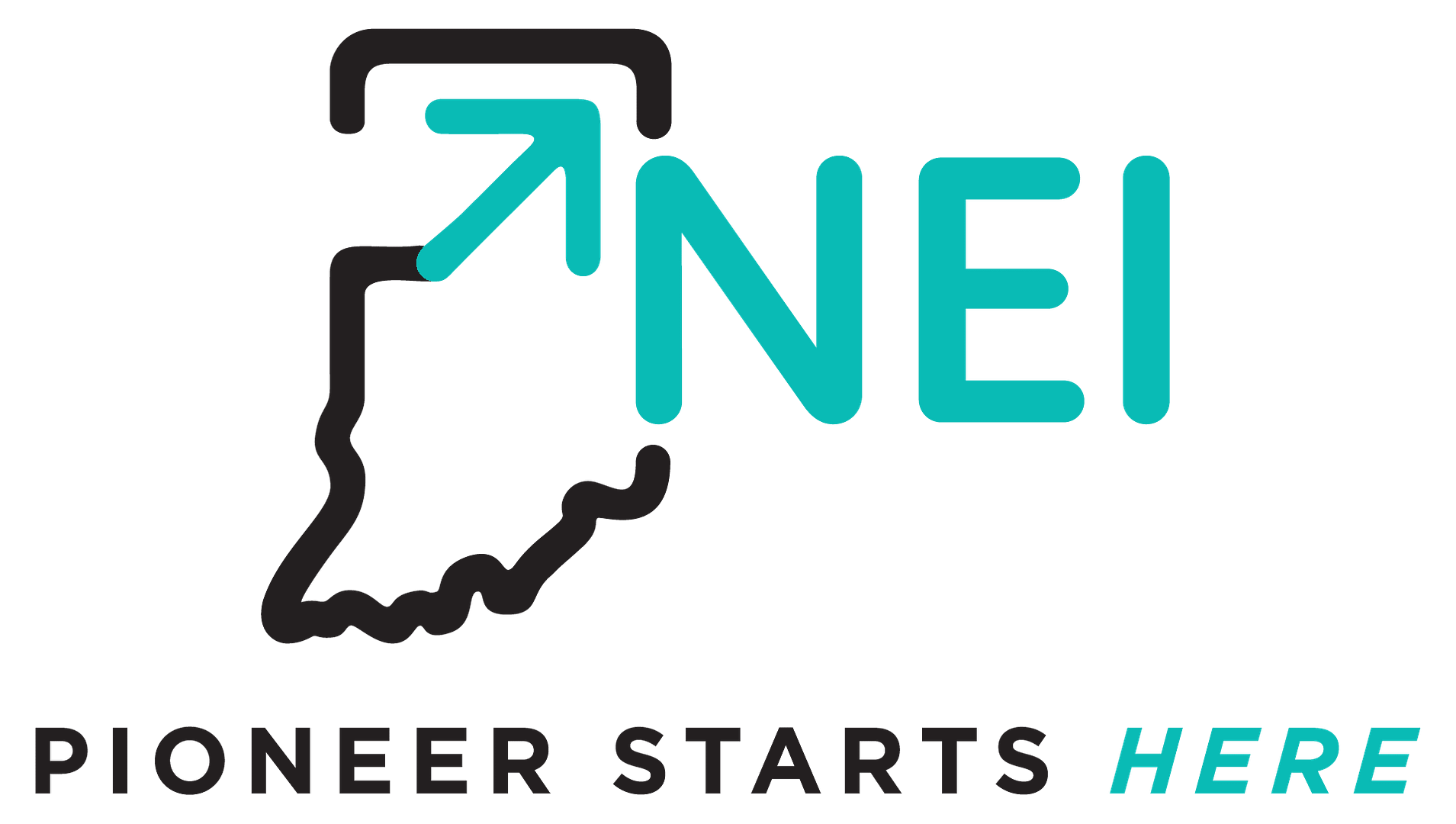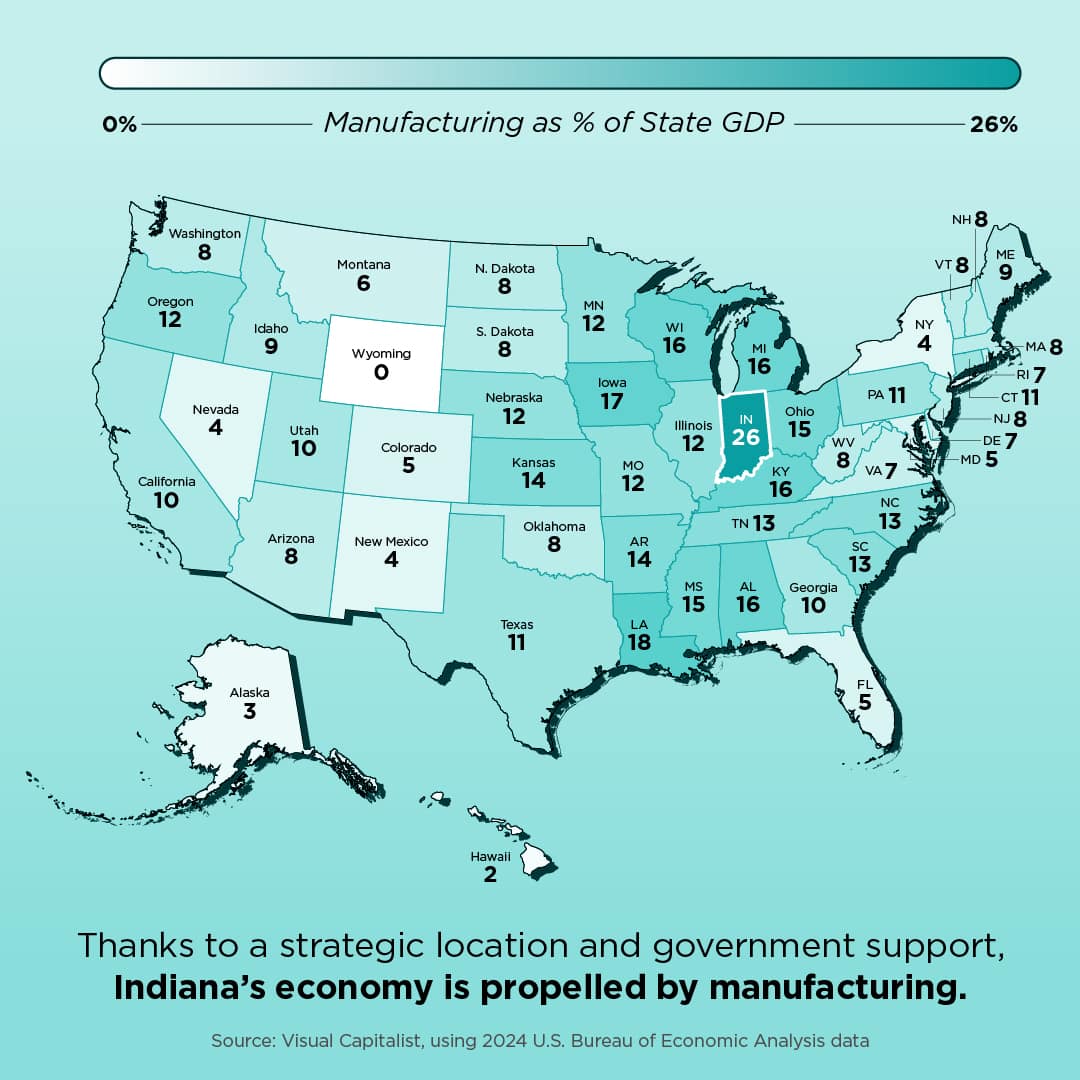The U.S. economy is evolving, presenting both challenges and opportunities. While growth is expected to slow in 2025, new trade policies and market shifts bring complexities, but they also open doors for innovation, supply chain optimization, and workforce development.
By leveraging foreign investment, enhancing workforce skills, and expanding global market access, Northeast Indiana is well-positioned to navigate change and thrive. We remain committed to supporting businesses in seizing these opportunities and ensuring the region’s continued economic success.
Nationally, economists predict a soft-landing scenario—where growth slows but does not crash. Unemployment, currently at 4.1%, is expected to rise slightly, while consumer spending—long a driver of the economy—will likely weaken due to high borrowing costs. The Federal Reserve has kept interest rates elevated to control inflation, though potential rate cuts in late 2025 could provide relief. We are all looking for more clarity by the May meeting.
Fundamentally, the U.S. economy’s underpinnings remain solid: corporate balance sheets and consumer finances are healthier than before past downturns, and labor markets are still robust.
That said, downside risks remain significant, and optimism is tempered. High interest rates continue to work through the system and could yet trigger more pronounced slowdowns in interest-sensitive industries such as housing, autos, and capital investment.
However, several indicators still point to recession risks. The U.S. yield curve has been inverted since mid-2022, a historical warning sign of economic contraction. Business confidence is mixed, with some sectors already showing signs of weakness. Should growth falter more than expected, Indiana—given its reliance on cyclical industries—could experience an outsized impact.
Manufacturing is the backbone of Northeast Indiana’s economy, contributing over 26 percent of the state’s GDP. While the state has seen a surge in investment—particularly in high-tech and electric vehicle manufacturing—the sector is highly sensitive to economic cycles. A recession would likely dampen demand for durable goods, leading to factory slowdowns, and potential job losses.
The added strain of new steel and aluminum tariffs further complicates the picture. A 25 percent increase in costs for these essential materials would directly impact Indiana’s automotive, machinery, and construction industries. General Motors’ Fort Wayne truck plant and numerous metal suppliers across the region could face higher input costs, reducing competitiveness, and forcing difficult financial decisions.
Agriculture, another pillar of Indiana’s economy, is already entering a leaner phase. After a period of record farm incomes until recently, lower commodity prices and high input costs are squeezing profit margins. Now, retaliatory tariffs from key trade partners like China, Canada, and Mexico threaten to further weaken the sector.
Indiana is a major producer of corn, soybeans, pork, and dairy, all of which could be targeted by foreign governments in response to U.S. tariffs. The last time a trade war erupted, U.S. soybean exports to China collapsed by 94%, dealing a severe blow to farmers. If similar measures take effect, Northeast Indiana’s rural communities—already facing tight margins—could see further financial strain.
In the meantime, we must stay focused and continue to pursue every opportunity and capitalize on still strong interest from foreign companies (FDI) to enter the US market or invest to better serve their existing customers.
As such we still see tremendous opportunity in high-growth sectors such as medical technology, defense manufacturing, and renewable energy, which may benefit from new policies and are less volatile.
We see opportunities to strengthen local supply chains, mitigate tariffs by relocating suppliers, enhance workforce skills through training and incentives, and help farmers specialize and access global markets.
As always, we remain committed to ensuring Northeast Indiana remains a hub of economic opportunity. If your business has concerns about these developments, I encourage you to connect with us so we can work together on strategies for navigating this period of uncertainty.
Stéphane Frijia
President & CEO
Northeast Indiana
Want to be the first to learn more about what is going on at NEI and our region? Sign up for the NEI Newsletter and Blog HERE.




